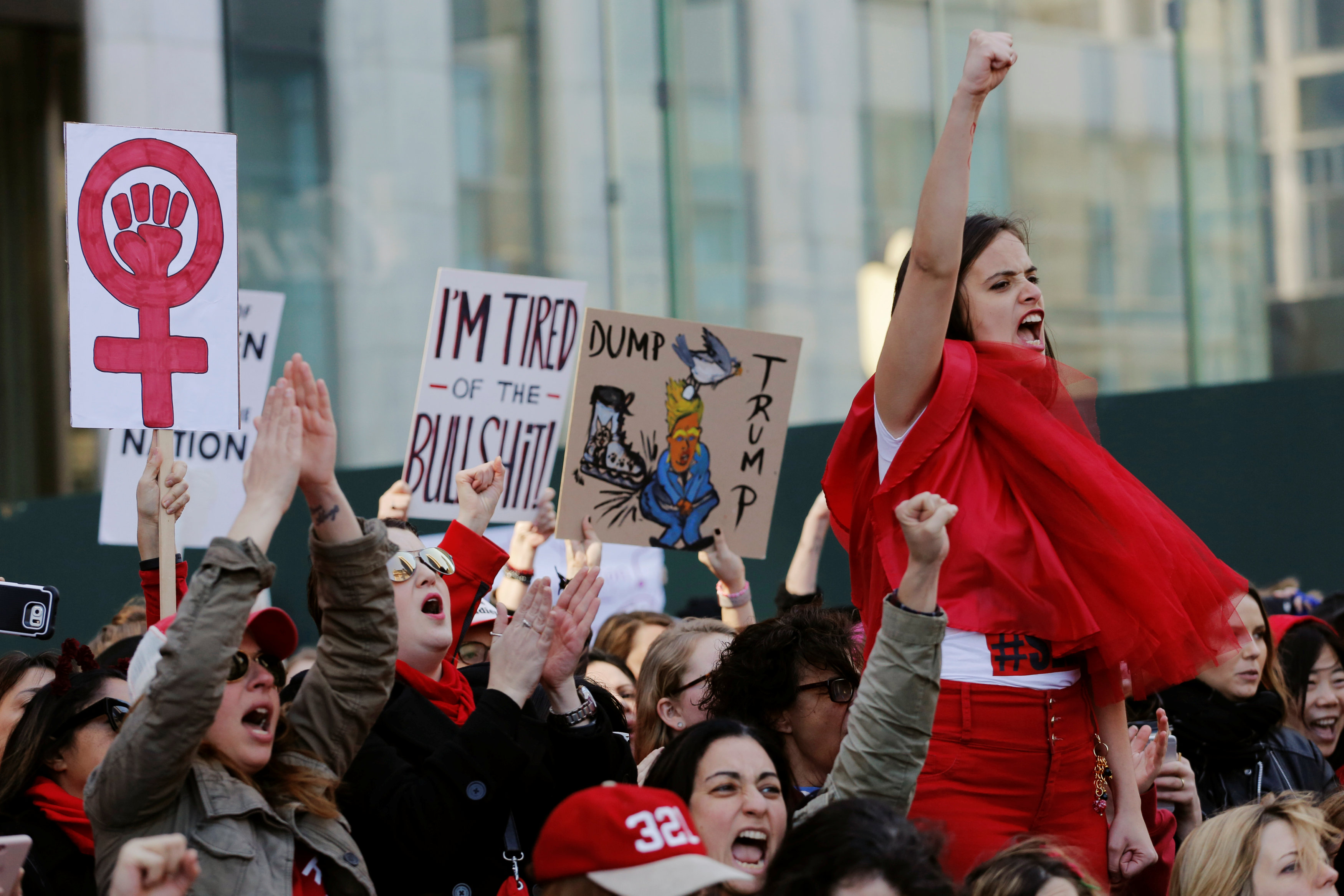Image: Women take part in a ‘Day Without a Woman’ march on International Women’s Day in New York, U.S., March 8, 2017. REUTERS/Lucas Jackson
By Joseph Ax and Letitia Stein
(Reuters) – Women demonstrated across the United States on Wednesday in favour of economic equality and against President Donald Trump’s policies on abortion and healthcare for “A Day Without a Woman,” some skipping work or boycotting stores.
Looking to seize upon the momentum of the Women’s March on Washington on Jan. 21, the day after Trump’s inauguration, the one-day protest coincides with International Women’s Day with events in more than 50 countries, organizers said. The day was modelled in part after pro-immigrant demonstrations on Feb. 16, the latest in a series of anti-Trump protests since his Nov. 8 election.
“I had to go to show that is not my president. Every time he opens his mouth, it’s a garbage can,” said Iloane Lila, 73, who joined thousands of women at a rally in New York City’s Central Park.
Lila, a Trinidad native, said she asked for the day off from her job as a nanny and attended her first-ever political rally in January, prompted by her anger at Trump.
A similar crowd gathered at Washington and other rallies were planned in cities such as Atlanta, Chicago and San Francisco.
At least three U.S. school districts, in Virginia, Maryland and North Carolina, closed on Wednesday because of staff shortages.
Trump, whose 11-year-old comments about grabbing and kissing women against their will surfaced during the campaign, took to his Twitter account early on Wednesday to cite International Women’s Day and the “critical role” of women around the world.
“I have tremendous respect for women and the many roles they serve that are vital to the fabric of our society and our economy,” the Republican president tweeted.
It was unknown how many women may have sacrificed a day’s pay or withheld their purchasing power from the economy.
At a rally of about 100 people in St. Petersburg, Florida, Tammye Moore, 55, a self-employed event planner said she was taking an earnings hit to attend.
“It’s important enough to pause for this cause, because the loss would be greater for me not to be here today,” Moore said.
By having women, who make up 47 percent of the U.S. civilian labour force, flex their economic muscle, organizers hope to call attention to the gender pay gap, access to reproductive health services, and Trump’s actions that have restricted access to abortion overseas.
American women on average earn 79 cents for every $1 that men make, and African-American and Latina women make even less, said Terry O’Neill, president of the National Organization for Women. Since women account for two-thirds of all minimum wage workers, lifting the hourly wage would significantly narrow the pay gap, she said.
The minimum wage has been stuck at $7.25 at the federal level since 2009, although it is higher in many states.
Not all women, however, were on board with the call for a women’s strike, with some critics citing the vagueness of the movement’s aims and the disruptive effects of a work stoppage.
Organizers, aware that many women lack the motivation or cannot afford to take a day off, are also urging women to limit shopping for the day to stores owned by women and minorities or small business. Women could also wear red to show their support.
O’Neill said the rallies and activities had a partisan edge that may not make all women feel welcome.
“People who voted for Trump need to think long and had about what they imposed upon our country,” O’Neill said.Among the targets of some demonstrations are a Trump “gag order” that bars foreign health providers receiving U.S. funds from raising abortion as an option, she said.
(Reporting by Joseph Ax in New York and Letitia Stein in St. Petersburg; Writing by Peter Szekely; Editing by Daniel Trotta and Lisa Shumaker)
Copyright 2017 Thomson Reuters. Click for Restrictions.


